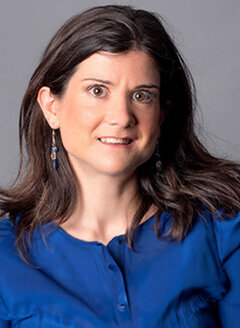Sun protection: Cosmed clarifies the challenges ahead
SYBILLE MILLET, MARIE MAGNAN
Regulatory affairs managers, COSMED
ABSTRACT: Although suncare products are essential for consumer protection, they are sometimes the subject of controversy.
New regulations projects, new UV filters assessments and new SPF test methods are underway. Cosmed discusses the consequences for the sunscreen industry and market, as well as the developments to be expected.
“
“A study in healthy women providing probiotic yogurt for four weeks showed an improvement in emotional responses as measured by brain scans”

Figure 1. Skin Section with Microbiome. Most microorganisms live in the superficial layers of the stratum corneum and in the upper parts of the hair follicles. Some reside in the deeper areas of the hair follicles and are beyond the reach of ordinary disinfection procedures. There bacteria are a reservoir for recolonization after the surface bacteria are removed.
Materials and methods
Studies of major depressive disorder have been correlated with reduced Lactobacillus and Bifidobacteria and symptom severity has been correlated to changes in Firmicutes, Actinobacteria, and Bacteriodes. Gut microbiota that contain more butyrate producers have been correlated with improved quality of life (1).
A study in healthy women providing probiotic yogurt for four weeks showed an improvement in emotional responses as measured by brain scans (2). A subsequent study by Mohammadi et al. (3) investigated the impacts of probiotic yogurt and probiotic capsules over 6 weeks and found a significant improvement in depression-anxiety-stress scores in subjects taking the specific strains of probiotics contained in the yogurt or capsules. Other studies with probiotics have indicated improvements in depression scores, anxiety, postpartum depression and mood rating in an elderly population (4-7).
Other studies have indicated a benefit of probiotic supplementation in alleviating symptoms of stress. In particular, researchers have looked at stress in students as they prepared for exams, while also evaluating other health indicators such as flu and cold symptoms (1). In healthy people, there is an indication that probiotic supplementation may help to maintain memory function under conditions of acute stress.
INTRODUCTION
The sun protection market is a dynamic one, which should enjoy annual growth of 3.5% over the next 5 years, driven by consumer awareness of the risk of skin cancer and of skin ageing linked to exposure to UV rays.
Brands are contributing to this growth by constantly innovating to ensure that effective sun protection is not a burden for consumers, but a pleasure. However, this innovation is taking place in a regulatory framework increasing the pressure on filters and calling into question the range of ingredients essential to formulators in developing high-performance formulas.
Formulating suncare products
Formulating suncare products is a complex business, requiring a high level of technical expertise from formulators. Each filter has specific properties (solubilization, absorption wavelength, etc.), and only a combination of filters can provide the desired stability, SPF and UVA/UVB ratio. There can be no such thing as a "one-size-fits-all" formula, since the supply of suncare products must meet all skin types and expectations. Each type of formulation requires a specific and delicate combination of filters, and even minimal formula changes can have a direct impact on the final SPF.
Suncare products have also become more technically advanced in recent years, especially for water-resistance and sweat-resistance, but also in terms of sensoriality. This criterion is essential to ensure the protection of consumers, who will only use a protective product if it meets their needs and is pleasant to apply.
UV filters account for most of formula costs, so the formulator's skill also lies in finding the most optimal synergies, to offer products that are accessible to different consumer budgets.
Last but not least, hundreds of patents have been registered on filters or combinations of filters that make the work of the formulator even more sensitive.
Worldwide availability of UV filters
Considering an international formula for a suncare product is complex today, given the number of criteria to be taken into account, and in particular the UV filters that are authorized in the different parts of the world.
To generalize, most countries in the world operate in a similar way to the European Union, with a positive list of UV filters, outside of which it is not possible to use a substance with UV protection properties.
In Europe and other areas, such as ASEAN and Mercosur, the list evolves quite frequently, and while many filters are increasingly restricted, new molecules or nano forms are also added.
For other countries, the list of authorized UV filters rarely changes (e.g. China, Japan), and remains limited and different from EU filters, making it impossible for companies marketing in the EU to export their product without modifying the formula.
The equation becomes even more complex if we take into account the restrictions put in place to protect the environment. Some island states have banned filters such as benzophenone-3, which are suspected to be harmful to corals.
A simplified assessment of the number of UV filters that could be used for a suncare product to be exported internationally limits the result to around ten filters. And this is without considering nano forms which would have to be removed, because their proven safety is sometimes questioned in some countries.
In the USA in particular, the use of UV filters is threatened by the CARES Act, a bill which recognizes as GRASE (generally recognized as safe and effective) only non-nano mineral filters (zinc oxide and titanium dioxide). A call for data is currently underway to maintain the use of the other filters.
Regulatory context in the EU
European cosmetics regulation defines a positive list of UV filters in annexe VI. But in practice, to formulate products that can be exported, or to anticipate regulatory measures, the list of UV filters used in sun products is much shorter. And in parallel the regulatory pressure on UV filters is continuously increasing.
In the context of the evaluation of the 28 substances identified as a priority for the assessment of their potential endocrine disruptor properties, 6 UV filters were in scope.
No impact was highlighted for 4 of them:
- 3 UV filters are considered safe at the use concentration (Benzophenone-3, Benzophenone-4 and Octocrylene (1) with minor percentage reduction).
- 4-MBC, which is neither used nor defended by industry will be banned by 2025. The impact is greater for Homosalate (2) following its restriction, as it is still authorised in facial products but only at a reduced concentration. The Ethylhexyl methoxycinnamate is still under assessment.
In addition to these assessments, the current call for data on salicylic esters is unprecedented and covers a wide range of substances, including Homosalate and Ethylhexyl salicylate with the aim to assess aggregate exposure to salicylic acid. This remains to be followed closely as it may impact future use of these substances.
In parallel of those UV filters safety assessment for Human health, new restrictions are ongoing to cover environmental concerns. In this context, France intends to restrict the use of Octocrylene in cosmetic products due to its environmental impact. The proposed restriction should be released by the beginning of 2025 and discussed at the European Commission before its publication that could happen in 2027.
UV filters must be UV-resistant, persistent on the skin and lipophilic, with low skin penetration, those characteristics translate into low biodegradability. As part of the Green Deal, substances classified as Persistent, Bioaccumulative and Toxic under the new CLP classifications will come under regulatory pressure. Cosmed defends the fact that UV filters must be the subject of particular attention to ensure reasonable and appropriate management of these substances, in a product category where consumer safety with regards to the harmful effects of UV radiation must remain at the heart of the debate.
In addition to regulatory developments, some filters may be ruled out for reasons of media coverage or formula cost. For example, [nano] filters can sometimes be ruled out when the marketer does not wish to highlight the presence of nano in his product, a feature sometimes criticised by media.
Cosmed stress the importance of considering the global regulatory context and the need to maintain a choice of UV filters to formulate products meeting consumer expectation in order to encourage correct application, which remains key to effective protection of the skin against the harmful effects of the sun.
To better inform consumer on the way to use sun products and to keep ensuring safety and efficiency of sun products, the recommendation of the European Commission for sun products published in 2006 is reopened. Discussions are ongoing between the European Commission, the member states and the stakeholders. New rules could be drafted by 2025, for the definition of the sun protection levels and the labelling of sunscreen products.

Evaluating the effectiveness of suncare products
There are several criteria for measuring the effectiveness of sunscreen products, including the Sun Protection Factor (SPF) which assesses protection against UVB rays, and the UVA Protection Factor against UVA rays. In order to guarantee a good level of protection for the consumer, and to measure this protection in a reliable and standardized way, internationally recognized and standardized ISO methods have been developed and published.
ISO 24444 (in vivo) is the reference method for determining SPF. This is carried out in-vivo on volunteers.
On the other hand, there are 2 recognized methods for measuring UVA protection factor: ISO 24443 (in vitro) or ISO 24442 (in vivo).
The sun protection factor (SPF) is measured using a method based on tests carried out on human skin with UV doses inducing an erythemal skin reaction, which has raised a number of ethical questions for several years. This is why the development of alternative in-vitro methods for SPF measurement is the subject of significant international work. The main difficulty is that any alternative method must demonstrate test accuracy and reproducibility equivalent to the reference ISO 24444 in vivo test method.
At present, two in-vitro methods for SPF, developed in the ISO group on photoprotection test methods for sunscreen products, are at an advanced stage. They are due to be published in late 2024 or early 2025.
The first, ISO 23675, is based on the evaluation of UV transmittance through a thin film of sun protection product spread over molded and sandblasted plates, before and after exposure to a controlled dose of radiation from a solar simulator. This enables SPF values to be predicted.
The second method is the ISO 23698 project, which offers an hybrid test procedure (in vitro and in vivo) called hybrid diffuse reflectance spectroscopy (HDRS), a combination of in vivo diffuse reflectance spectroscopy measurements on the skin and in vitro transmission measurements. It has the advantage of being able to measure both SPF and UVA Protection Factor at the same time and the in vivo measurement is done with very low UV light intensity not generating skin erythema so not raising ethical concerns.
In parallel with the publication of these new methods, the ISO working group's technical consortium is still studying other potential in-vitro methods for measuring SPF. Indeed, having a choice of the most reliable methods is essential to adapt to all types of formula and UV filters. To be continued...
All these topics will be covered at the next Cosmetic Days congress, organized by Cosmed on December 3&4, 2024 in Orléans. https://www.cosmed.fr/en/page_evenement/cosmeticdays-2024/
Surfactant Applications

The application area lends itself particularly well to the use of AI. Active today in this area is the US company Potion AI (6). The company provides AI-powered formulation tools for beauty and personal care R&D. Their offerings include Potion GPT, next generation ingredient and formula databases and AI document processing. Potion’s work could have a significant impact on the entire surfactant value chain, from raw material suppliers to end consumers. By using their GPT technology, they can help target work toward novel surfactant molecules that have optimal properties for specific applications. By using their ingredient and formula databases, they can access and analyze a vast amount of data on surfactant performance, safety, and sustainability. By using their AI document processing, they can extract and organize relevant information from patents, scientific papers, and regulatory documents. These capabilities could enable Potion AI's customers to design and optimize surfactant formulations that are more effective, eco-friendly, and cost-efficient. A particularly interesting application for this type of capability is deformulation.
Deformulation is the process of reverse engineering a product's formulation by identifying and quantifying its ingredients. Deformulation can be used for various purposes, such as quality control, competitive analysis, patent infringement, or product improvement. However, deformulation can be challenging, time-consuming, and costly, as it requires sophisticated analytical techniques, expert knowledge, and access to large databases of ingredients and formulas.
AI can potentially enhance and simplify the deformulation process by using data-driven methods to infer the composition and structure of a product from its properties and performance. For example, AI can use machine learning to learn the relationships between ingredients and their effects on the product's characteristics, such as color, texture, fragrance, stability, or efficacy. AI can also use natural language processing to extract and analyze information from various sources, such as labels, patents, literature, or online reviews, to identify the possible ingredients and their concentrations in a product.


